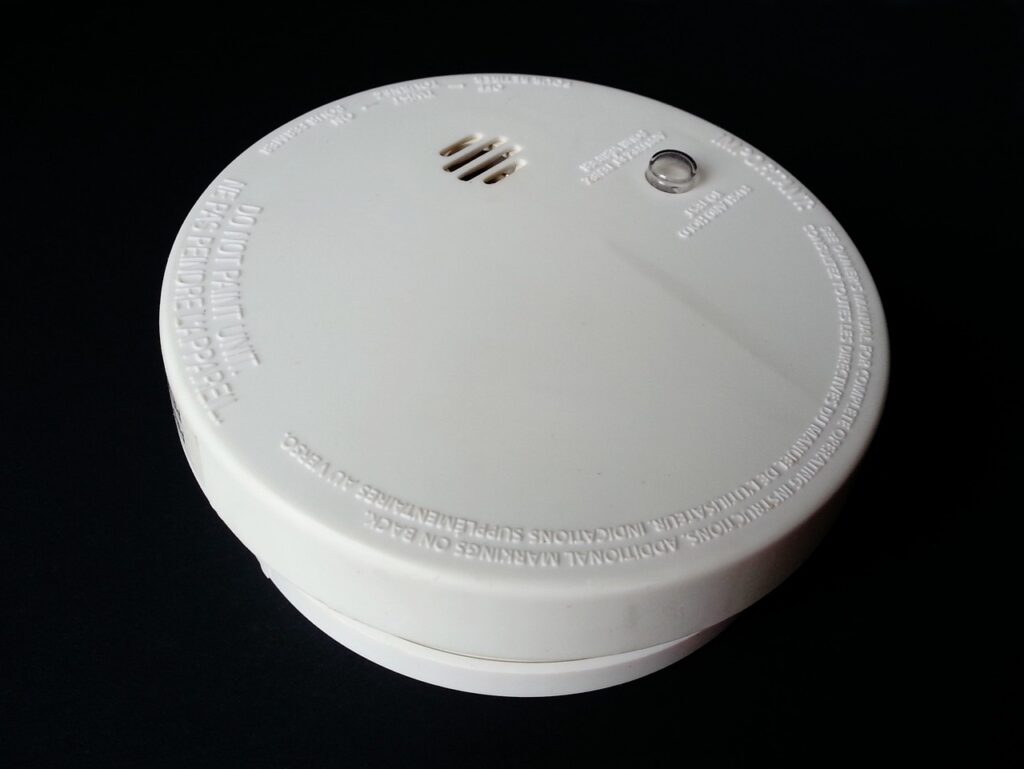Did you know house fires pose one of the greatest risks to your family’s safety at home? Fortunately, there’s a simple and cost-effective solution that can help mitigate this risk: smoke alarms. The National Fire Protection Association (NFPA) recommends installing at least one smoke alarm in every bedroom, outside of each sleeping area, and on every level of your home (including the basement). Here’s some important info about how to install and test smoke alarms:
Choosing A Smoke Alarm
Smoke alarms use different types of sensors: ionization sensors are better for sensing flames, while photoelectric sensors are better at sensing smoldering fires and smoke. To ensure optimal performance, look for dual sensor alarms that utilize both sensor types.
Many smoke alarms operate independently from on another, meaning they only sound the in areas nearest the actual smoke or fire. However, with interconnected smoke alarms, when one alarm sounds, all alarms sound at the same time. This provides the advantage of notifying people in all areas, not just the location where the fire started.
Smoke Alarm Installation
Smoke alarms should be mounted as follows (per NFPA):
- Read your manufacturer’s instructions on installing smoke alarms.
- Ceilings are generally the BEST place to mount your smoke alarms.
- If your ceilings are pitched, mount them 4″-36″ from the peak (not to high, not too low).
- Wall-mounted alarms should be no more than 12″ from the ceiling (smoke rises).
- In the basement, mount your alarm(s) on the ceiling, near the bottom of the stairs.
- Allow at least 10′ from your stove to prevent false alarms while cooking.
- Install alarms away from drafty windows, doors and ductwork.
- Never paint smoke alarms!
Testing Smoke Alarms
Periodically testing your smoke alarms is extremely important, but is often forgotten. Consider setting reminders using a calendar. Here are some tips for testing your smoke alarms:
- Read your manufacturer’s instructions on testing and maintaining your smoke alarms.
- Test your smoke alarms monthly.
- Make sure everyone in your home knows what the alarms sound like and where exists are located.
- Have a plan for everyone that details what to do when alarms go off. Practice this plan.
- Smoke alarms with non-replaceable batteries often last for 10 years. Check manufacturer info.
- Smoke alarms with replaceable batteries require annual battery replacement. Check manufacturer info.
- Regardless, you should test your alarms monthly
- Most alarms will “chirp” to warn you when the batteries are low. Listen for chirps and resolve low battery issues ASAP (DON’T JUST SILENCE THEM AND FORGET).
In summary, smoke alarms are a cheap and effective way to improve your home’s safety and reduce the risk of death in the event of a fire. By following the tips and recommendations outlined above, you can ensure your smoke alarms are properly installed, maintained, and tested, and provide reliable protection for you and your family.
If you know someone who doesn’t have the means to purchase and install smoke alarms, call me TODAY at the number below. We’ll figure out how to help them. As always, it’s completely confidential.
Justin Rollheiser – REALTOR®
Keller Williams Realty | Diamond Partners Inc
13671 S Mur-Len Rd | Olathe, KS 66062
Direct 913-548-5972
Office 913-322-5878
Comments or Questions?
